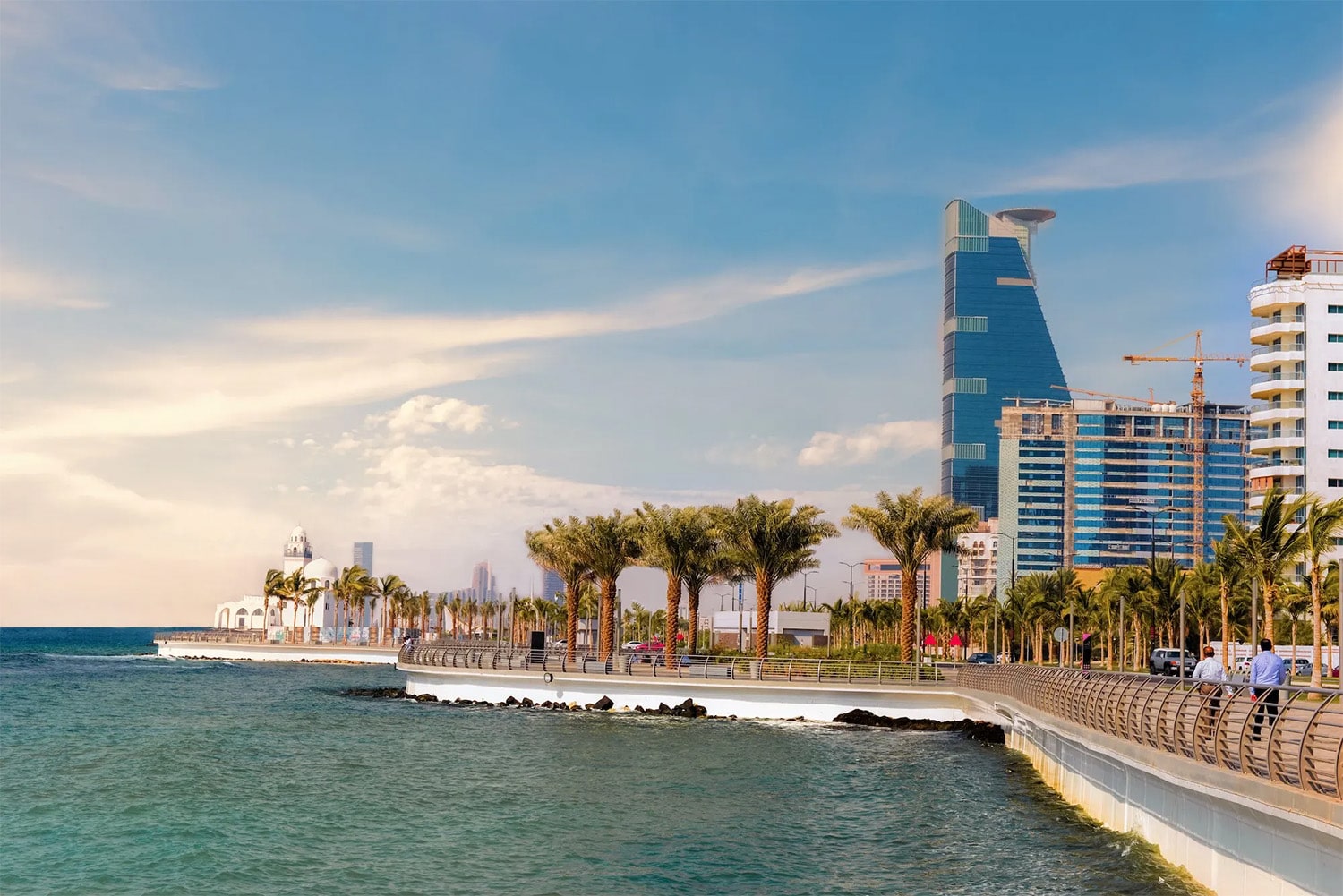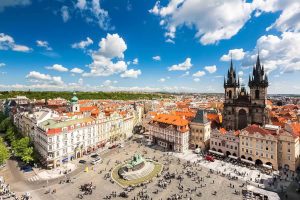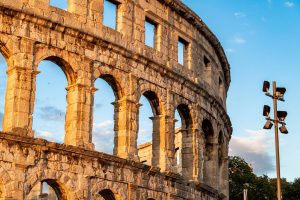
31 interesting facts about Jeddah
- 👁️ 375
Jeddah, the “Bride of the Red Sea,” is a city of great historical and cultural significance in Saudi Arabia. As the country’s commercial capital and gateway for pilgrimages to the Islamic holy cities of Mecca and Medina, Jeddah holds a unique position both geographically and spiritually. The city’s rich history is intertwined with the development of the Islamic world, making it a melting pot of cultures, traditions, and architectural styles. Today, Jeddah is known for its bustling economy, modern cityscape, and as a center for arts and entertainment within the kingdom. Let’s explore some interesting and informative facts about Jeddah that highlight its importance and the vibrant life within.
- Jeddah is the second-largest city in Saudi Arabia, after the capital, Riyadh.
- It serves as the main gateway for pilgrimages to the Islamic holy cities of Mecca and Medina.
- The city’s history dates back to the 7th century when it was established as a major port for Indian Ocean trade routes.
- Jeddah’s historic Al-Balad district is a UNESCO World Heritage site, known for its traditional multi-story houses and ancient coral stone architecture.
- The King Fahd Fountain in Jeddah, also known as the Jeddah Fountain, is the highest water fountain in the world, reaching heights of up to 260 meters (853 feet).
- Jeddah is home to the Red Sea Mall, one of the largest shopping centers in Saudi Arabia.
- The city’s Corniche area is a popular waterfront promenade stretching over 30 kilometers along the Red Sea, offering scenic views, art installations, and recreational areas.
- Jeddah Islamic Port is the largest seaport in the Red Sea and one of the busiest ports in the Middle East.
- The Jeddah Tower, under construction, is set to become the world’s tallest building, surpassing the Burj Khalifa in Dubai upon completion.
- Jeddah is known for its open-air art museum, featuring works by renowned international artists like Henry Moore and Joan Miró, displayed across the city.
- The Tahlia Street is a major commercial and retail hub in Jeddah, famous for its luxury shopping and dining options.
- The city has a diverse population, with residents hailing from various ethnicities and backgrounds, contributing to its rich cultural tapestry.
- Jeddah hosts the annual Jeddah Season festival, which includes concerts, theatrical performances, and cultural events, attracting visitors from across the region.
- The Floating Mosque, officially known as the Fatima Al-Zahra Mosque, is a striking example of modern Islamic architecture, built over the sea along the Jeddah Corniche.
- Jeddah’s climate is characterized by a tropical desert climate, with high temperatures throughout the year and minimal rainfall.
- The city was historically enclosed by walls, with eight gates providing access to different districts, of which some remnants can still be seen today.
- Jeddah is an important commercial hub, with a focus on sectors like shipping, trade, banking, and real estate.
- The Makkah Gate, also known as the Qur’an Gate, is an iconic landmark that marks the entrance to the holy city of Mecca for pilgrims traveling through Jeddah.
- The Abdul Raouf Khalil Museum in Jeddah showcases the city’s history, Islamic art, and cultural heritage, spanning over several centuries.
- Jeddah’s economy is also significantly supported by its status as a major fishing center in the Red Sea.
- The city has a vibrant nightlife scene, with numerous cafes, restaurants, and entertainment venues catering to its diverse population.
- The Jeddah Sculpture Museum features an outdoor collection of sculptures and artworks by Saudi and international artists, set along the Corniche.
- King Abdulaziz International Airport in Jeddah is one of the largest and busiest airports in Saudi Arabia, serving as a primary hub for international pilgrims.
- The city has seen rapid modernization in recent decades, yet it retains its historical character and cultural significance.
- The Al-Shallal Theme Park, also known as the “Fakieh Poultry Farms,” offers various entertainment options, including an ice-skating rink and an artificial lake.
- Jeddah’s municipality has implemented several environmental initiatives, including coral reef preservation programs in the Red Sea.
- The city is a significant center for medical tourism in Saudi Arabia, boasting several top-rated hospitals and medical facilities.
- The Al-Rahma Mosque, commonly referred to as the Floating Mosque, is not only an architectural marvel but also serves as an important place of worship for the city’s Muslim population.
- Jeddah has a thriving arts scene, with numerous galleries and cultural centers promoting contemporary Saudi and Arab art.
- The city played a crucial role in Saudi Arabia’s oil boom, serving as a key commercial link between the country’s oil fields and the rest of the world.
- Jeddah’s strategic location on the Red Sea has historically made it a crossroads of trade and cultures, influencing its development as a cosmopolitan urban center.
Jeddah stands as a testament to Saudi Arabia’s rich history, cultural diversity, and modern development. Its blend of ancient heritage and contemporary lifestyle makes it a fascinating city for both residents and visitors. From historic districts to towering skyscrapers, and from cultural festivals to environmental initiatives, Jeddah continues to evolve while honoring its past. The city not only serves as a gateway to the sacred sites of Islam but also as a vibrant urban center contributing significantly to the cultural and economic landscape of the Middle East.











